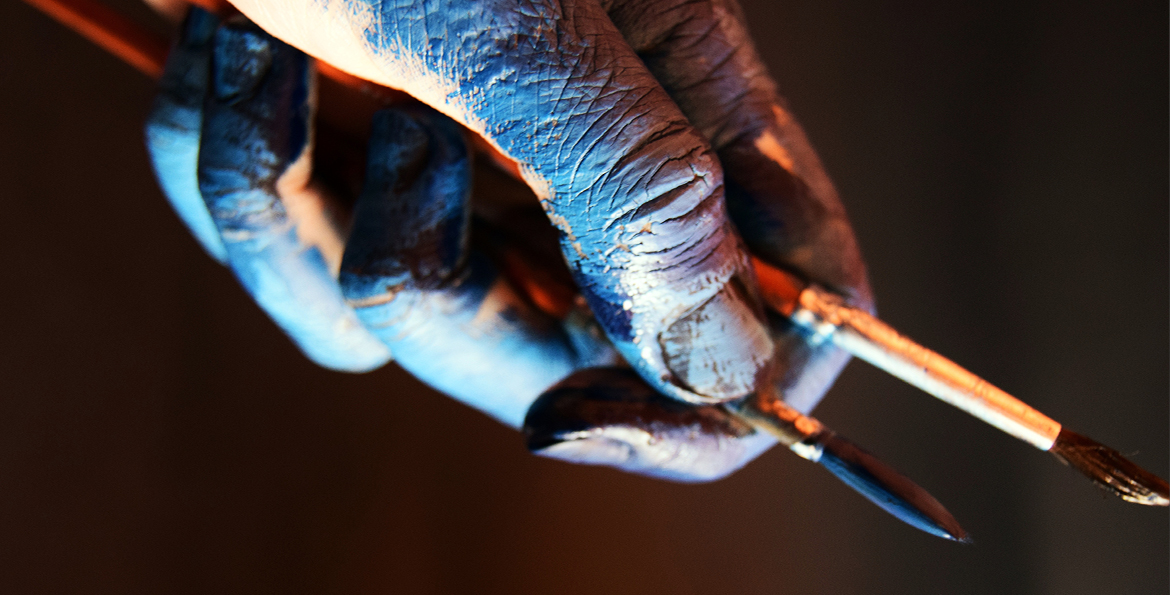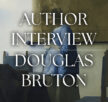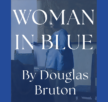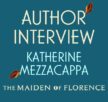Charlotte’s Portrait

It was only because the children wanted an old board game from the attic that Charlotte discovered it. The sun was shining intensely outside; bees buzzing on the windowsill after resting on the daffodils. On a day like this the children should have been running around in the garden. One of the great sins of childhood is to waste a summer day in a wintery environment. And their house was rather cold and regimented; with the high ceiling where the ornamental glass butterflies hung from the oaken balustrades. Numerous books were neglected on the large shelves, dusty and browning. Anyone would have thought the house was habituated by an old couple. But Charlotte tolerated the house and didn’t complain to her husband who was proud of the home and good to her.
There were numerous trinkets and forgotten heirlooms in the attic. How could there be so much dust, Charlotte wondered. But when she saw the portrait, dry with age and rich and powerful with the force of its invocation, she gasped. She stepped back and almost bumped her head on the low-lying ceiling. Her hair, which looked younger than any part of her body, silky and sierra, vibrant as her giddy children downstairs, collected long cobwebs. Her fingers too were slender and bore the dust like chalk.
Charlotte took with her the board game the children wanted. She laid it out for them on the deck between the kitchen door and the garden, where the shade slept at noon. She went back upstairs, the portrait lingering in her mind. The attic remained open so Charlotte clambered back up and reached for the painting.
It was wise not to bring it downstairs where the children could see it; also her husband might return at any moment. He had probably forgotten all about it even though Charlotte told him the story of its creation a few months after they met. It was a throwaway response to a half-hearted question. But telling the story again would only provoke awkwardness. Despite this she was still annoyed with herself for forgetting about the portrait after all this time. It was akin to misplacing a wedding ring or a family photo album.
In any case Charlotte brought the painting into the bedroom and placed it on top of the bed which was neatly made. The sunshine entered mostly from the
skylight in the ceiling. Looking at it there in that silent moment Charlotte was more upset with herself for allowing her portrait to soil and wither in the dark dustiness of the attic. It was almost a symbol of neglect, or banishment from a past life. The surface was undisturbed with only a few strokes of asperity interrupting the otherwise smooth and gracious canvas. The colours too were still glistening with the sincerity of those moments when they were made. Charlotte relived it all again, sitting on the bed, watching her own portrait as though it might tell her something new.
How did it happen again? Yes, she was in a charity shop looking for a bargain. Charlotte had a decorated eye for dresses and knew how to tailor items especially for her body. And at the age of eighteen in college with a part-time job at the Italian café where her friends would meet, the clothes were worth the value.
Her English professor was ill that day and so she finished early. It was a relief. She had not completed her assignment on the significance of wallpaper in Henry James’ novels. But the afternoon would not be wasted, Charlotte thought; it was wise to occupy time with the nourishment of one’s desires. In that case she went to the charity shop to look for something that might excite her attention for a weekend. There were many exciting pieces but Charlotte especially liked a long, beige coat with a high, rounded collar and belt fastener. It was only twelve euros and a perfect fit for her slender waist. She could wear it with most of her other dressy clothes. Why buy something that won’t look appealing with the clothes you already wear? Anyway, she thought, I will treat myself to it. She took it from the rack and tried it on, but she knew it would be her purchase no matter how it lent itself to her body. As Charlotte brought the coat to the till there was a man talking to the shop assistant. The man was slightly hunched but still stood at a medium height for his years, which were beyond middle-age. He had thick but neat hair, grey and slate. His clothes were presentable but from a bygone period. Charlotte listened to the discussion, the coat dangling over her forearm and resting against her ribcage.
‘I’m afraid I can’t help you, sir. This is a charity shop and I can’t bargain with you,’ the woman said.
As it happened the man was trying to buy a collection of old paint brushes but he did not have enough money. His voice was crackly but gentle when he spoke. He may have been suffering a cold, Charlotte thought. But he was decent and did not raise his tone or become aggressive. Without any specific urge one way or the other, Charlotte spoke out. The man turned at once, his face appearing over the hump of his shoulder.
‘I’ll buy them for you,’ she surprised herself saying, ‘if you’ll let me. I’d like to.’
The man inflected a soft but embarrassed sound. The shop assistant eyed Charlotte and waited for the man to respond.
‘Oh, I couldn’t possibly ask you to do that, young lady. But thank you very…’
‘No, let me, please. It’s no trouble, honestly,’ Charlotte answered.
Charlotte reached for her purse. Her handbag was balanced over her shoulder on the same side at which she held the long coat. The man watched her but also turned to the shop assistant intermittently. Then he glanced at Charlotte who saw his entire face for the first time. There was a carefully manufactured moustache resting on his upper lip, snowy and regal.
‘Now, here, that should do it.’ Charlotte said, placing the money on the counter.
It was enough money and the woman placed a receipt on the counter. The man took the white paper and put the brushes into his canvas bag but all the time he was looking at Charlotte.
‘I appreciate that very much. I’ll repay you if you let me.’
It was then apparent to Charlotte that she would not have enough money to buy the prized beige coat. She laid it down on the rail and walked to the door with the man. He did not notice the forgotten coat. They approached the light from the sun and Charlotte could see his classical appearance; shiny brown shoes and tailored tweed pants under his long, moss green coat. He could pay her back, she thought, but what did it matter. It was only a few euros and maybe the beige coat would still be available in the shop tomorrow.
‘Perhaps you will allow me to paint your portrait,’ the man said gentlemanly.
‘It’s the least I could do. And it would be appropriate considering it was you who purchased the brushes for me.’
His entire body was positioned in a place of appeasement and he spoke with sincerity. Charlotte had never been asked such a question but in the moment an answer was required from her she was not able to see a reason to say no. She laughed nervously and spoke, ‘Yes, I suppose so. No one has ever painted my picture before.’
Later that night Charlotte was surprised to find herself constantly ruminating on the man. When she was preparing dinner she conversed with him in her mind, replaying the scene. And as the morning grew near she wondered what clothes to wear and how to present herself. Also she decided not to tell her friends in college because they wouldn’t understand. Even for her it was difficult to understand the sudden act of kindness of paying for the man’s brushes.
His name was Cooper, he had said, and handed Charlotte the address to his studio. Lunch time would be suitable if it was a good time for her, too, he had suggested, and Charlotte had agreed.
The next day she arrived at his studio which was situated in a cobble-stone lane with large bins and old bicycles lining the shoddy walls. It was no place to cultivate art, Charlotte thought, but still she was anxious to see Mr Cooper’s studio. After all, he could be a perverse old man, desperate for attention and with no consideration for a young person’s comfort. Or maybe he was just an amateur painter, working through a passing interest, spending retirement on an old dream.
Mr Cooper opened the door when Charlotte buzzed at the entrance. He looked at her then with a mixture of joy and trepidation in his eyes. It was quite a sight that was presented to him. Charlotte wore a v-neck green blouse which showed a small triangle of her freckled chest. She also wore a knee length skirt with medium height beige heels. He smiled and made way, his hands by his side. Still he wore similar clothes, spruce but with a thread of age and raggedness. The room too was a relic of the past but maintained with dignity and the vibrancy of the colourful canvases which were littered throughout the room like old newspapers. There were two ashtrays on the windowsill. The inlaid bricks were green and grey, and the sofas were also of a tired design and mottled with tears and fraying stitches. There was no smell other than the dying embers of coffee and the silky remains of oil.
Charlotte sat down as instructed. She moved as though she was unwelcome, shy and soft-footed. Mr Cooper had made tea and offered lunch but Charlotte declined politely. She felt she was already putting him to trouble.
A few hours later and like the passing of a meal consumed in the throes of romance, Cooper completed the portrait. Charlotte’s body was becoming stiff. All throughout the session her weight rested on her left foot. Cooper allowed her room to shift from time to time to alleviate the tension. And he rarely spoke, working professionally, but he was not stolid or mercurial. He moved around the canvas occasionally like taking a step in a dance. All this time, Charlotte was desperate to see the work and she prepared herself for disappointment but this was not what she experienced.
It was her. In no other way could she imagine and define herself other than the details of the portrait. The picture was how she always saw herself without being able to articulate it. But the effort was finally made and it was as though she no longer needed to be the person others thought she was. Now that the image was defined she could be who she really believed she was.
Mr Cooper disappeared into the kitchen while Charlotte examined the portrait. Was he upset, unsatisfied, annoyed? Charlotte wondered. But he entered again with a tray of tea and sandwiches, walking steadily.
‘Now, I think we have both earned this.’ Cooper said.
They shared a late lunch at the small table between the kitchen and the atelier. Charlotte felt beautiful in his company because she knew that he could see her. And he too seemed to live in such an easy way, knowing what to say and how to say it. He was worldly, telling old stories without being boring. He told Charlotte that he had once lived in Buenos Aires and he had painted dancers there. Paris was another squatting spot where he had lived between small streets and café fronts.
‘But that was a long time ago. I think I’ve let my dreams die out a bit since then. Rent and such things get in the way some times.’ He chuckled. Charlotte agreed with a nod and then finished her tea and sandwiches. Shortly after, Mr Cooper wrapped up the portrait with brown paper and presented it to Charlotte. She could just about remember what it looked like but wanted to enjoy the surprise of seeing it again when she returned home. Neither could she tell anyone about this picture. It was a secret to herself.
Sitting on her bed twenty years later, Charlotte summoned the smell of oil and cigarettes. She was there again in Cooper’s studio with that same feeling of trepidation in her limbs. But she was on her bed and her body was not tense and strained under the stillness of a pose. She was lying flat with the portrait beside her. For so many years she closeted the portrait under wraps and in the darkness of cupboards and attics. Why did she do that, she wondered. She was afraid the world would see her. She knew it, and she had given up herself for a version that the world could live with. And now like the stroke of a brush across the canvas, the years were over and done with. Looking at the portrait and seeing herself as she was before brought sadness and regret to Charlotte’s heart. It was as though her time was up and now her life was devoted to something other than her true self.
Through the saturation of modern society, she had broken that special link, the link processing time. Seconds were too fleeting to feel them pass by. Instead only stretches of time, often as long as ten or twenty years, were perceived. Charlotte’s only time existed solely in that portrait, which she wrapped up again in Christmas paper from under the bed. The dust scarpered from the frame and drifted through the room.
The children were downstairs playing and would soon be hungry. Charlotte’s husband was returning from work and the car would cruise up the driveway over the stones. They would sit at dinner and drink wine after the children went to bed. And where was Mr Cooper in all this, Charlotte mused. Twenty years later he was probably deceased. He was lying silently in his grave or scattered like dust on some landscape from his youth. But at least he had his time and lived it while he could, Charlotte thought.
For more short stories, subscribe to our weekly newsletter.














